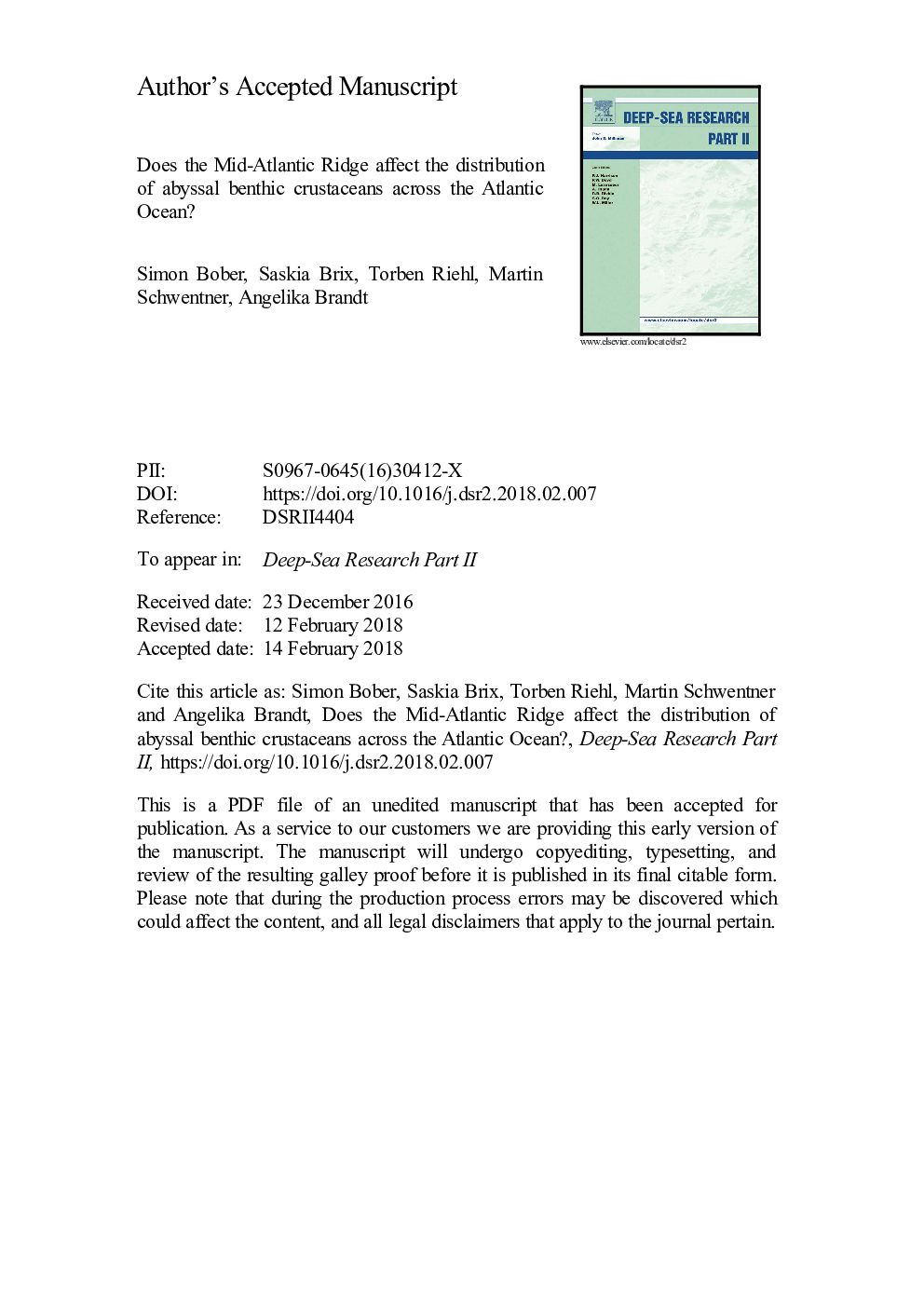| Article ID | Journal | Published Year | Pages | File Type |
|---|---|---|---|---|
| 8884455 | Deep Sea Research Part II: Topical Studies in Oceanography | 2018 | 35 Pages |
Abstract
Based on two genetic datasets of Macrostylidae and Desmosomatidae/Nannoniscidae studied by Riehl et al. and Brix et al. in this issue we found that most of the therein-delimitated species were found at only one side of the MAR. We analysed those species of Macrostylidae and Desmosomatidae that were sampled across the MAR and complemented these with one species of a third family: Munnopsidae. With these datasets we were further able to consider the effect of different niche adaptations: Macrostylidae are infaunal (burrowing), Munnopsidae are considered epifaunal with pronounced swimming capabilities and Desmosomatidae and Nannoniscidae are partly able to swim, but are not as well adapted to swimming as Munnopsidae. We concluded that the MAR seems to be a dispersal barrier for the non-swimming Macrostylidae as well as weakly-swimming Desmosomatidae and Nannoniscidae. However, four species of Macrostylidae and Desmosomatidae did cross the MAR, but evidence for regular unrestricted gene flow is still lacking. For the swimming Munnopsidae we were able to detect persistent gene flow across the MAR.
Related Topics
Physical Sciences and Engineering
Earth and Planetary Sciences
Geology
Authors
Simon Bober, Saskia Brix, Torben Riehl, Martin Schwentner, Angelika Brandt,
